#S.S. Van Dine
Text

JOMP Book Photo Challenge
March 20: Hello, spring
#jompbpc#justonemorepage#book photo challenge#book photography#booklr#books and flowers#books and plants#s.s. van dine#crime fiction#mystery#leerreadinglire
5 notes
·
View notes
Text
S.S. van Dine: Der Mordfall Greene
Vance schüttelte den Kop. "Bei diesem Fall gibt es nichts, was einfach so passiert. Alles hat eine entsetzliche Logik - jedes Detail ist sorgfältig und raffiniert geplant. Nichts ist dem Zufall überlassen. Doch just diese Systematik seines Verbrechens wird den Mörder am Ende zum Verhängnis werden. Finden wir den Schlüssel zu einer der Außentüren, so finden wir auch unseren Weg hinein in die Schreckenskammer."
0 notes
Text

eucanthos
The Canary Murder Case (1929). Jean Arthur and S.S. Van Dine (art critic and detective novels writer Willard Huntington Wright)
15 notes
·
View notes
Text
Like everyone else, I've been having some thoughts on Link Click's latest episodes.
Namely, I'd like to discuss whether Link Click's story is deep enough into the "mystery" genre to actually play by the rules of a detective mystery.
Is Link Click's mystery even meant to be solvable? Should we all take the ending's advice and just "quit overthinking"? My thought is no! Below the cut are some classic rules that may guide us in solving this tale.
As we all know, the fun in reading a mystery comes from attempting to solve it. Therefore, there must be an agreement between the reader and the author that the mystery is in fact solvable by the reader. Guidelines were made in the late 1920s (Agatha Christie's time) regarding the rules of a mystery. They are the Ten Commandments of Ronald Knox and S.S Van Dine's Twenty Rules. I'll be directly quoting, and you can read them in full here: Link
Of course, as the mystery genre evolves, it is no longer bound to these rules. (Link Click ignores Knox's 2nd, as it's a supernatural mystery, for example) But the sentiment of guaranteeing reader solvability stands true.
Points that stand out to me include:
Knox's 1st: The criminal must be mentioned in the early part of the story, but must not be anyone whose thoughts the reader has been allowed to know.
I want to take this as meaning that our clue to the WHO and WHY of all this might exist as far back as "Emma." But does "early part of the story" maybe refer to S1 as a whole, or should we only count S2?
Knox's 6th: No accident must ever help the detective, nor must he ever have an accountable intuition which proves to be right.
I believe the story has followed this. No problem is solved by "just a hunch." There has always been evidence provided to the viewer.
Knox's 10th: Twins...and doubles generally, must not appear unless we have been duly prepared for them.
We were prepared for the switch, and many of you called it! Evidence that Link Click IS playing by some of these rules. (go team!)
Other Knox rules involves the "Detective" and the "Sidekick." Neither the detective nor the sidekick may conceal facts from the reader, nor may they be a culprit. Which completely (suspiciously) excludes Lu Guang from either role. Cheng Xiaoshi could fit the role of detective, and if there IS a single designated sidekick, (a Watson whose job it is to voice thoughts at the intelligence level of the reader) it is Qiao Ling, who is doing an excellent job of telling us what we want to hear and possibly leading us astray.
Van Dine's 1st: The reader must have equal opportunity with the detective for solving the mystery. All clues must be plainly stated and described.
Okay. This is not a novel, so I don't think clues need to be plainly stated, but they must be plainly shown (like the damn kettle.)
Van Dine's 2nd: No willful tricks or deceptions may be played on the reader other than those played legitimately by the criminal on the detective himself.
I think this is where many of us have ill sentiments toward the writers. I want to give benefit of the doubt about the eyes, seeing as the characters themselves seen to be unawares. I am solely focused on body language for future assumptions made. It still hurts. This is why it hurts.
Van Dine's 10th: The culprit must turn out to to be a person who has played a more or less prominent part in the story -- that is, a person with whom the reader is familiar and in whom he takes an interest. For a writer to fasten the crime, in the final chapter, on a stranger or person who has played a wholly unimportant part in the tale, is to confess to his inability to match wits with the reader.
This is a rule I find to be quite important and that worries me most. Whoever "hat man" is, I NEED him to be someone we've met. Better if we've known them since s1. Because, truly, as far as mysteries go? I think we are too deep in for a new, important character to come out of left field. But, um, well, the options are pretty limited in that case, aren't they?
Van Dine's 15th: The truth of the problem must at all times be apparent -- provided the reader is shrewd enough to see it. By this I mean that if the reader, after learning the explanation for the crime, should reread the book, he would see that the solution had, in a sense, been staring him in the face -- that all the clues really pointed to the culprit -- and that, if he had been as clever as the detective, he could have solved the mystery himself.
This rule is the heart of the matter. In following this rule, we can trust that (with 3 episodes left) all the clues we need are RIGHT. THERE. That we have a right to be blissfully frustrated because we can trust that the mystery is solvable. Is that the case? I honestly don't know, and I wish I did.
I also want to mention Van Dine's 18th and 19th which state that a crime must never turn out to be accident or suicide (as followed with Emma), and the motive for all crimes should be personal (Liu Min, Qian Jin, and Li TianChen check the box, even if we can only guess at the specific motives in relation to the victims.)
So, I think we all agree that Link Click embodies many genres at once. I could never, in good faith, recommend this story to someone as solely a mystery. But is Link Click enough of a mystery that we can trust it to abide by these rules? I'm not fully convinced we can even designate any character as "the detective", making some of these rules (for detective mysteries) moot.
What do you think? Is what we are being shown something we can trust and solve? Can we use these rules to help us find the solution? Or should we define this show as a drama/suspense first and a mystery second? I, personally, want to believe in the mystery.
But please, whatever you do, don't stop thinking about it. This is too much fun!
#link click#时光代理人#yes I've played Umineko it's why I'm like this#link click season 2#shiguang dailiren
29 notes
·
View notes
Text


The Pictorial Review, June, 1933.
With The Dragon Murder Case by S.S. Van Dine.
Art by Clark Agnew
23 notes
·
View notes
Text


First edition of The Casino Mudercase - S.S Van Dine
3 notes
·
View notes
Text
Posted a review of Philo Vance #2: The Canary Murder Case by S.S. Van Dine on my blog. Read it here.
tl;dr – Not good
0 notes
Text
The Benson Murder Case
The Benson Murder Case
By S.S. Van Dine
First published in 1926, The Benson Murder Case relates the murder of a wily womanizer found shot dead in his home, and behind locked doors. Amateur Detective Philo Vance makes his first appearance in this work and assists the New York District Attorney in tracking down the murderer. Vance would go on to feature in a dozen novels by Van Dine throughout…

View On WordPress
0 notes
Text
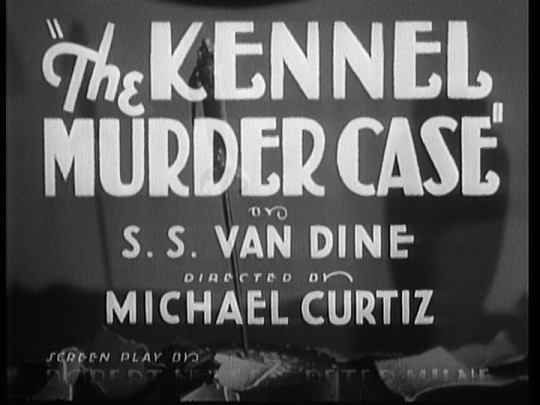

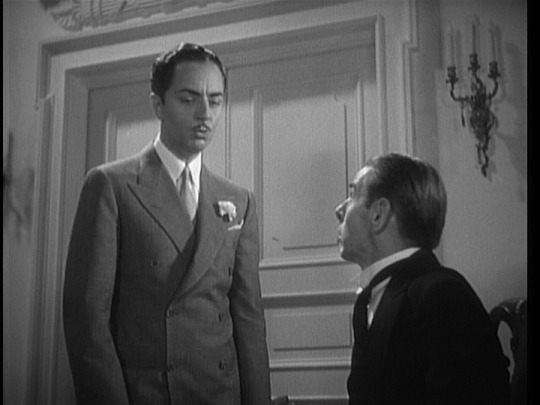
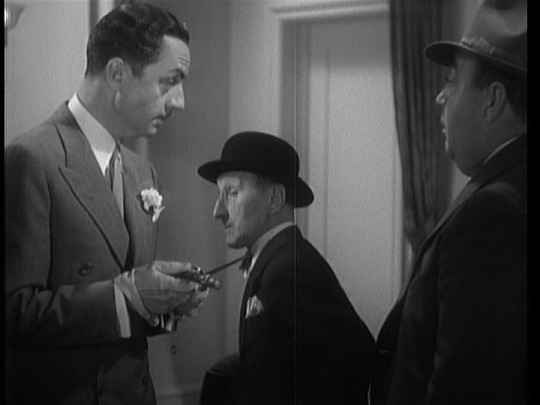
youtube
The Kennel Murder Case (1933)
My rating: 6/10
Pleasant little whodunit with many a good dog (most of which survive) and just the teensiest hint of bigotry, and even that comes from a character that's supposed to be a bit of a buffoon. Not bad, for 1933.
#The Kennel Murder Case#Michael Curtiz#S.S. Van Dine#Robert N. Lee#Peter Milne#William Powell#Mary Astor#Eugene Pallette#Youtube
2 notes
·
View notes
Photo

The Benson Murder Case. S.S. Van Dine. New York: Scribner's, 1926. First edition. Later issue dust jacket.
This novel opens with the death of playboy stockbroker, Alvin Benson, who is found in his brownstone mansion with a bullet through his head. First on the scene is Philo Vance, amateur detective, who is at once intrigued by the absence of Alvin's toupee and his false teeth. These odd clues set him in pursuit of an elusive murderer.
8 notes
·
View notes
Photo

illustration by Clark Agnew
Pictorial Review, June 1933
120 notes
·
View notes
Text

JOMP Book Photo Challenge
October 27: Thriller
#jompbpc#justonemorepage#book photo challenge#the canary murder case#s.s. van dine#whodunit#detective fiction#philo vance#books and flowers#books and plants#leerreadinglire#mine
15 notes
·
View notes
Photo

La strana morte del signor Benson: La prima indagine di Philo Vance - S.S. Van Dine https://ift.tt/cU9gj6N
0 notes
Text
*rubs hands, raises her nerd flag high, clears throat*
It's Public Domain Day 2022!!!
Some books entering the public domain this year:
Dynamite: The Story of Class Violence in America by Louis Adamic (1931)
The Sun Also Rises by Ernest Hemingway (1926)
It Can’t Happen Here by Sinclair Lewis (1935)
The Moral Obligation to be Intelligent by John Erskine (1915)
Show Boat by Edna Ferber (1926)
The Weary Blues by Langston Hughes (1926)
Magnificent Obsession by Lloyd C. Douglas (1929)
Mutiny on the Bounty by Charles Nordhoff and James Norman Hall (1932)
Main Street by Sinclair Lewis (1920)
Winnie-the-Pooh by A. A. Milne, decorations by E. H. Shephard (1926)
The Seven Pillars of Wisdom by T. E. Lawrence (1926)
Bambi, A Life in the Woods by Felix Salten (1923)
The Murder of Roger Ackroyd by Agatha Christie (1926)
Faust (1926 film) written by Hans Kyser and directed by F. W. Murnau
Turandot (1926 opera) with a libretto by Giuseppe Adami and Renato Simoni; based on the play of the same name by Carol Gozzi
The Castle, an unfinished novel, by Franz Kafka (1926)
My Mortal Enemy by Willa Cather (1926)
Ralph 124C 41+ by Hugo Gernsback (1911)
The Benson Murder Case by S.S. Van Dine (1926)
Soldiers’ Pay by William Faulkner (1926)
Enough Rope by Dorothy Parker (1926)
Notes on Democracy by H.L. Mencken (1926)
593 notes
·
View notes
Photo
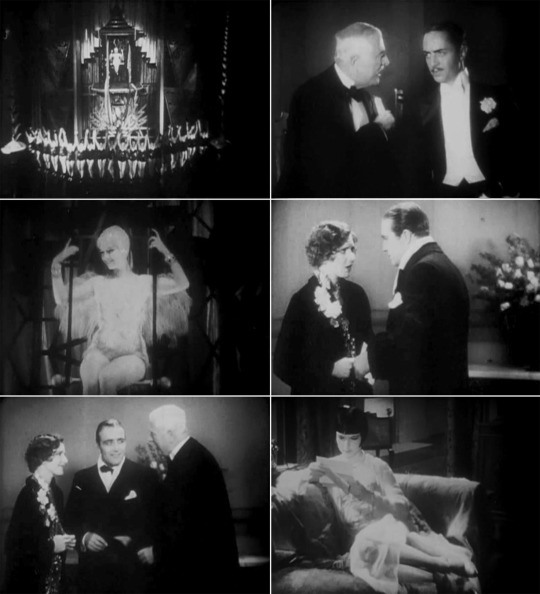




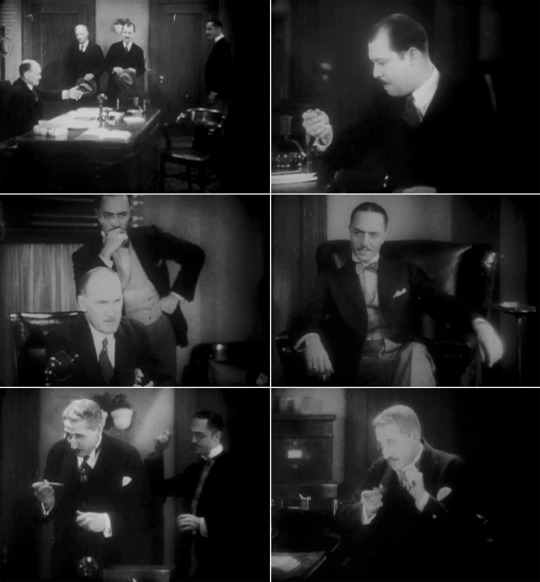

The Canary Murder Case 1929 is a Pre-Code crime-mystery film based on the 1927 novel of the same name by S.S. Van Dine
#the canary murder case 1929#the canary murder case#book adaptation#vintage hollywood#old hollywood#old hollywood movies#classic hollywood#golden hollywood#hollywood golden age#pre-code films#William Powell#Louise Brooks
31 notes
·
View notes
Photo

Illustration by E.M. Jackson for S.S. Van Dine's The Kennel Murder Case.
45 notes
·
View notes